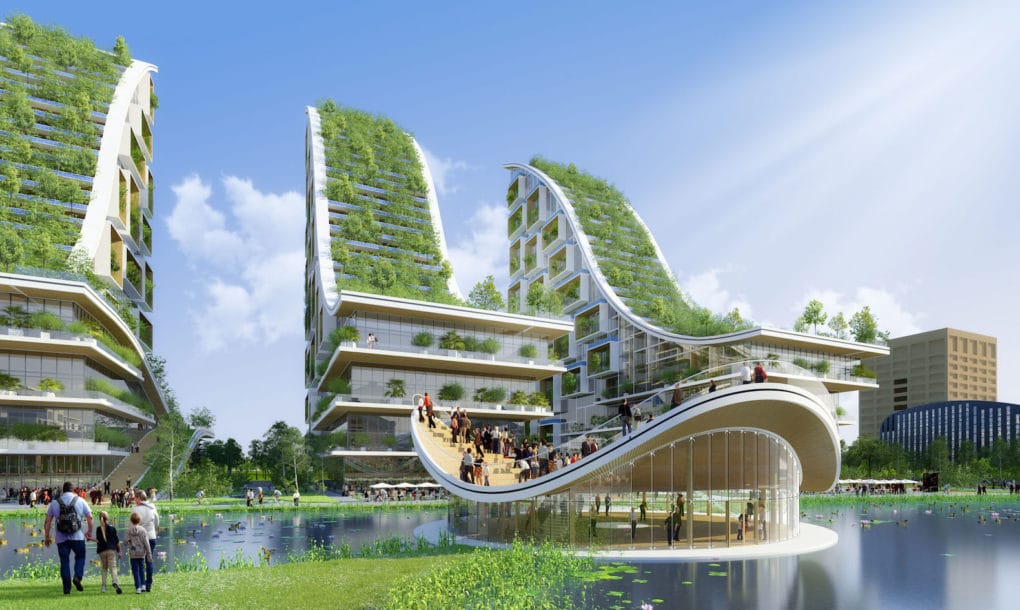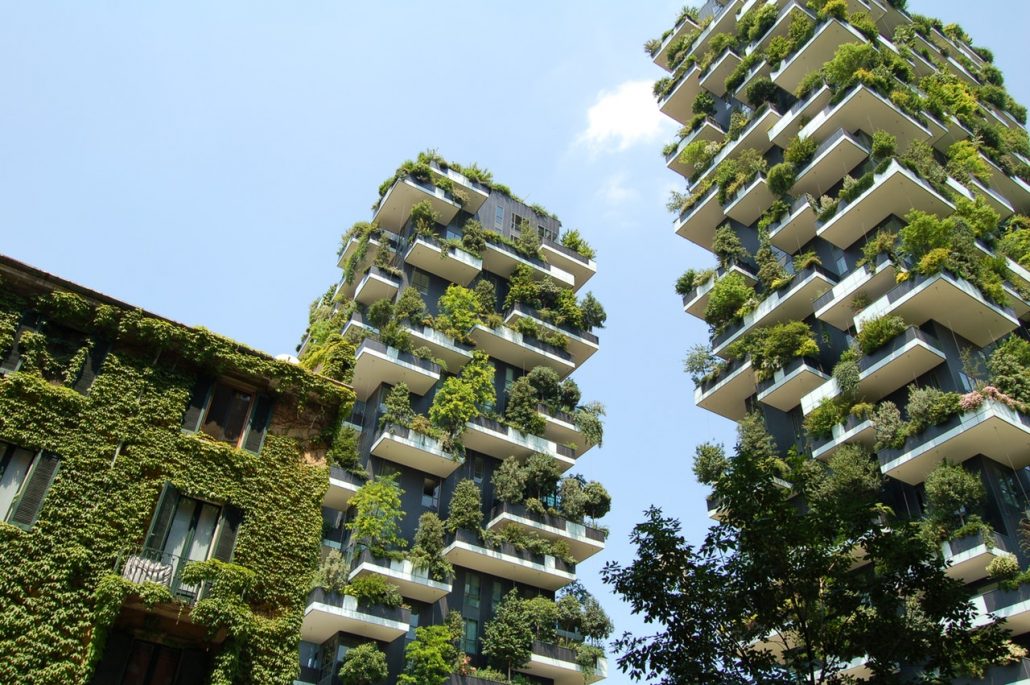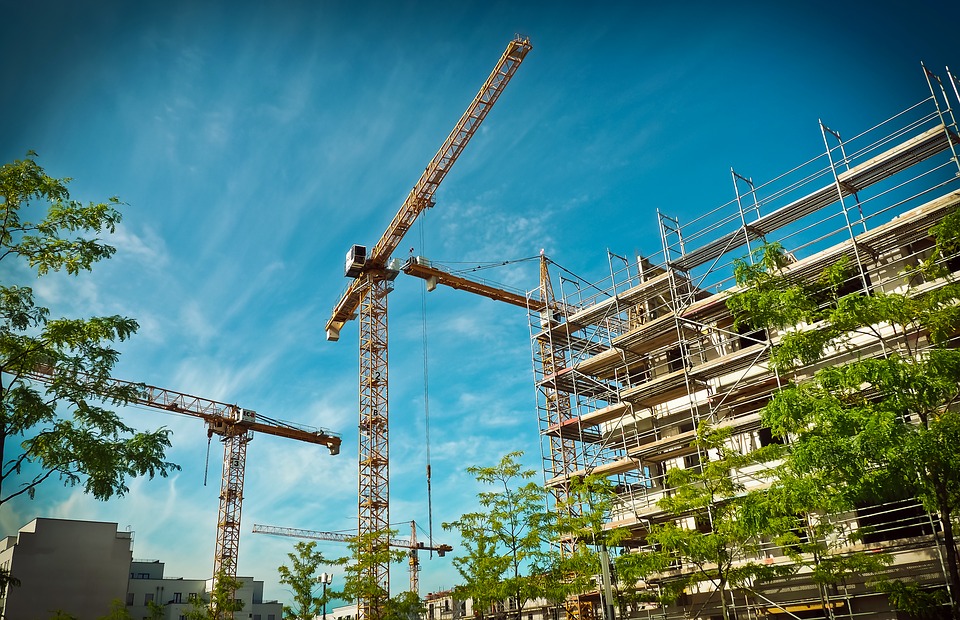How Does Architecture Integrate Principles Of Green Building Materials In Construction?
 If you are thinking about constructing a new building or renovating an existing one, one of the decisions you have to make is choosing the right building material.
If you are thinking about constructing a new building or renovating an existing one, one of the decisions you have to make is choosing the right building material.
With today’s focus on sustainability, you should consider using green building materials.
Green building materials offer a wide variety of benefits, not only for the environment, but also for your comfort and health, as well as for your pocket.
But what are green building materials?
Green building materials are materials that are renewable, eco-friendly, and sustainable, and that have a low environmental impact throughout their life cycle, from manufacturing and installation to use and disposal.
Here are 15 green building materials that you can use in sustainable construction:
Bamboo
Bamboo is a fast-growing, renewable, and versatile building material that can be used for flooring, walls, roofs, and furniture.
Bamboo is stronger and more durable than many types of wood, and it has a high tensile strength and flexibility, which makes it resistant to earthquakes and windstorms.
Bamboo also has natural anti-bacterial and moisture-resistant properties, which makes it ideal for humid climates.
Hempcrete
Hempcrete is a mixture of hemp hurds and lime that can be used for insulation, walls, and floors.
Hempcrete is naturally fire-retardant, and it has excellent insulating and acoustic properties, which makes it energy-efficient and noise-reducing.
Hempcrete also absorbs and releases moisture, which helps regulate indoor humidity and improve indoor air quality.
Rammed Earth
Rammed earth is a technique that involves compressing a mixture of soil, sand, and clay in layers to create solid walls.
Rammed earth is a low-cost, low-maintenance, and energy-efficient building material that is ideal for hot and dry climates.
Rammed earth walls have high thermal mass, which means that they absorb and store solar energy during the day and release it at night, which helps regulate indoor temperature.
Cork
Cork is a renewable and eco-friendly material that is harvested from the bark of cork oak trees.
Cork is lightweight, flexible, and durable, and it has natural soundproofing and insulation properties, which makes it ideal for floors, walls, and roofs.
Cork is also fire-resistant, anti-microbial, and hypoallergenic, which makes it a healthy and safe building material.
Reclaimed Wood
Reclaimed wood is wood that has been salvaged from old buildings, boats, or other sources, and that has been refurbished and reused for construction purposes.
Reclaimed wood is a sustainable, eco-friendly, and unique building material that adds character and warmth to your building.
Reclaimed wood is also durable and strong, and it has natural beauty and textures that cannot be replicated by new wood.
Rooftop Gardens
Rooftop gardens are green spaces that are installed on top of buildings, and that are used for growing plants, vegetables, and herbs.
Rooftop gardens are beneficial for the environment, as they absorb and filter rainwater, reduce the urban heat island effect, and provide habitats for birds and insects.
Rooftop gardens are also beneficial for human health, as they improve air quality, reduce noise pollution, and provide a relaxing and aesthetic space to hang out.
Bio-Glass
Bio-glass is a type of glass that is made from 100% recycled materials, such as waste glass, fly ash, and slag.
Bio-glass is a sustainable, eco-friendly, and durable building material that can be used for walls, floors, and countertops.
Bio-glass is also non-porous, heat-resistant, and easy to clean, which makes it a hygienic and low-maintenance building material.
Living Walls
Living walls, also known as green walls or vertical gardens, are walls that are decorated with plants and flowers, and that can be installed both indoors and outdoors.
Living walls are beneficial for the environment, as they absorb and filter air pollutants, reduce the urban heat island effect, and provide habitats for birds and insects.
Living walls are also beneficial for human health, as they improve indoor air quality, reduce stress, and create a calming and natural environment.
Straw Bales
Straw bales are a type of agricultural waste that can be stacked and plastered to create walls and insulation.
Straw bales are a low-cost, renewable, and energy-efficient building material that has excellent insulating and soundproofing properties.
Straw bales also have a low environmental impact, as they are biodegradable, and they can be easily recycled or composted after they are no longer used.
Solar Panels
Solar panels are devices that convert sunlight into electricity, and that can be installed on roofs and facades to generate renewable energy.
Solar panels are a sustainable and eco-friendly energy source that can reduce or eliminate your utility bills, and that can help you reduce your carbon footprint.
Solar panels are also durable and low-maintenance, and they require little or no maintenance once they are installed.
Bio-Masonry
Bio-masonry is a process that involves growing bacteria that produce calcium carbonate, which can be used to produce bricks and mortar.
Bio-masonry is a sustainable, eco-friendly, and low-cost building material that can be used for walls, floors, and roofs.
Bio-masonry is also energy-efficient, as it requires less energy to produce than conventional bricks and mortar, and it has excellent insulating and fire-retardant properties.
Green Roofs
Green roofs are roofs that are covered with vegetation, and that can be installed on top of buildings.
Green roofs are beneficial for the environment, as they absorb and filter rainwater, reduce the urban heat island effect, and provide habitats for birds and insects.
Green roofs are also beneficial for human health, as they improve indoor air quality, reduce noise pollution, and provide a relaxing and aesthetic space to hang out.
Mushroom Insulation
Mushroom insulation, also known as mycelium insulation, is a type of insulation that is made from mushroom roots and agricultural waste.
Mushroom insulation is a sustainable, renewable, and biodegradable building material that has excellent insulating and fire-retardant properties.
Mushroom insulation is also non-toxic, and it has natural anti-bacterial and moisture-resistant properties, which make it ideal for humid climates.
Cob
Cob is a building material that is made from a mixture of clay, sand, and straw, and that can be used to create walls and floors.
Cob is a low-cost, renewable, and energy-efficient building material that has high thermal mass and excellent insulation properties.
Cob is also durable, and it has a natural and rustic look that adds character and warmth to your building.
Faq
What are the benefits of using green building materials?
Green building materials offer a wide variety of benefits, including:
- Reducing your carbon footprint and environmental impact
- Saving money on utility bills
- Improving indoor air quality and health
- Providing natural and aesthetic spaces to hang out
- Creating sustainable and durable buildings
Which green building material is the best?
There is no single best green building material, as each material has its own advantages and disadvantages, and the best choice depends on your specific needs and circumstances.
Are green building materials more expensive than conventional materials?
Green building materials can be more expensive than conventional materials in the short term, but they can save you money in the long term by reducing your utility bills and maintenance costs, and by increasing the value and appeal of your building.
What should I consider when choosing green building materials?
When choosing green building materials, you should consider:
- The sustainability and eco-friendliness of the materials
- The durability and strength of the materials
- The energy efficiency and insulation of the materials
- The cost and availability of the materials
- The aesthetic and functional qualities of the materials
In conclusion, green building materials offer a sustainable, eco-friendly, and healthy alternative to conventional building materials, and they can help you create sustainable, durable, and beautiful buildings that benefit both the environment and human health.




Post a Comment for "How Does Architecture Integrate Principles Of Green Building Materials In Construction?"